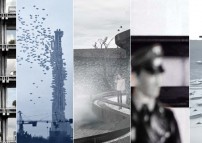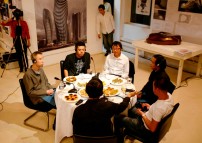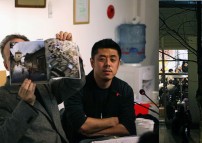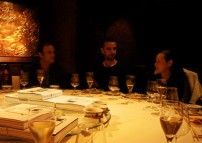
The Travel Fellowship was launched by MAD in 2009 to provide mainland Chinese students with an opportunity to travel abroad and research an architectural topic of their choosing. It is only through travel – the visceral experience of walking into a space – that one can begin to understand the full context and meaning of architecture. Professional development is based on firsthand experience to different places, which also reinforces MAD’s dedication to fostering contemporary design in co-existence with local traditions.
Ma Yansong, the founder of MAD, will conduct an initial review of all the applications, and will choose the five most qualified candidates to receive the fellowship. The winners will be announced on July 19, 2013. They are also expected to give a public presentation about their travel experiences and researches after they finish the travel.
Eligibility
• The applicant must be an undergraduate or graduate student majoring in architecture, landscape, or urban planning from mainland China (not including those graduating in 2013).
• The applicant should have never received the MAD Travel Fellowship before.
• Winners of the MAD travel fellowship should not hold any other fellowships at the same time.
• Winners are expected to spend 10 to 14 days outside of China in order to conduct their proposed research. This must be undertaken within 2 months after receiving the MAD Travel Fellowship.
• The MAD Travel Fellowship is intended for independent study only.
Submission
• Application letter (maximum 500 words: applicants should articulate the relevance of their travel to contemporary architectural practice, their ideal destinations and the benefits they will receive from their travel.)
• A travel itinerary (including the list of sites to visit and other resources they may require to support the proposed travel agenda.)
• CV (including name of current university and graduation year)
• Portfolio (independent work of the applicant, maximum of six A4 pages in PDF, not to exceed 3 megabytes)
Please submit the above materials as an A4 PDF to travel@i-mad.com along with your name, date of birth, gender, college or university, major, graduation year, and contact information in the e-mail. The file should not exceed 5MB. The application file should be named as the following: school_major_graduation year_name
• Application deadline: July 12, 2013, application valid with a received receipt from travel@i-mad.com
• Winner announcement: July 19, 2013, through i-mad.com and notice via email
Contact
Award manager: Xiao Xiaoxue
E-mail: travel@i-mad.com
Jury: Ma Yansong
2012 MAD Travel Fellowship Review
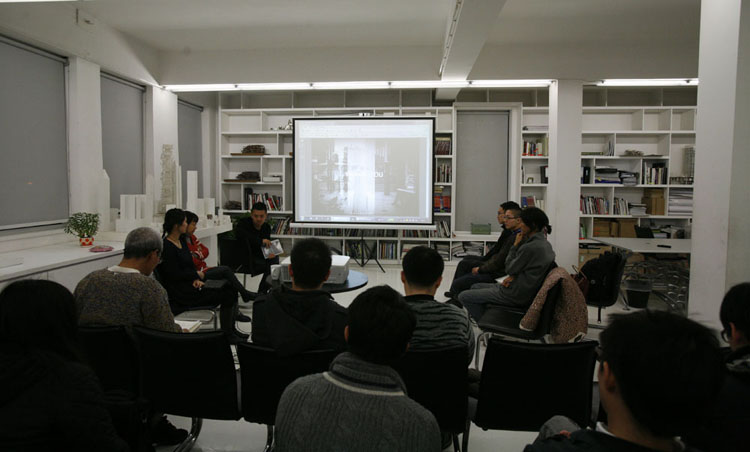
Ren Tianhang, Harbin Institute of Technology 2013, Destination: Britain
In Tianhang’s opinion, 19th Century London was a contradictory city just as contemporary China is now, and it is reflected greatly in the culture and prosperity of the city. However in the shadows of such metropolis, there is another group of people living with poverty and disease. Artworks in that period always inspire Tianhang to think about the dystopian nature of a fast-developing city under the industrial revolution, similar to contemporary Chinese cities. Through his travel, Tianhang hopes to have a clearer view of Chinese cities’ dilemma and to find a possible solution. London is an invaluable city to explore, even though its previous glory has faded away.

Jing Siyang, Central Academy of Fine Arts 2013, Destination: Japan
Jing Siyang thinks that architecture has its spirit. In a world filled with crazy material desires, it is far more difficult for people to calm down to think, to chat with their souls. Architecture, as a container where people do most of their everyday activities, has the responsibility to motivate people to communicate with themselves. The destination she is interested in is Tokyo. She hopes that she’s able to capture solutions to the existing urban problems of Tokyo in a humane and psychological way.

Pan Hui, Southeast University 2015, Destination: Egypt
“I hope my design is based on the past, displaying familiarity and mysteriousness to evoke consonance”. In Pan Hui’s mind, the best source of inspiration comes from our ancestors’ intelligence, for an ancient object is much closer to the essence. Egypt, as the origin of western culture, always captivated him to seek the origin of architecture, thereby coming to a definite future. The travel to Egypt and its architectural history charmed him greatly, and the power of culture excited him a lot.

Du Zhexu, Tianjin University 2013 (going to be intern in Buro Ole Scheeren after graduation this year), Destination: Netherlands
During the four-year process of learning architecture, Du Zhexu gradually realizes that architecture has an eternal topic-the context. A special context, whether in space or time, influences the function, the form, the construction and the site of architecture. Du Zhexu holds the view of how we comprehend architecture depends on how we comprehend the context of it. Undoubtedly, the best way to know the context is to feel the architecture on the spot, that is, travel. Dutch architects are sensitive to the times, which attracts Du. They are not trying to change the society by architecture. Rather, they are designing according to the reality, actively responding to the context. Therefore how are Chinese architects going to response to the fast urbanization context of China?

Qin Sizhi, Tsinghua University 2013, Desitination: India
My fathers' generation conducted urbanization with incredible speed. However, we ultimately found that these cities managed to satisfy only its residential function. Qin Sizhi believes that if lucky enough, our generation will undertake a second urbanization, setting up real living spaces in these cities filled with cement and steel. His four-year architectural education enabled Qin Sizhi to understand the basics of what architecture is, but he is still perplexed about life. He hopes that one day his design methods will mature, and that he can use his designs to encourage people to share a common view of life, as well as in thought.

2011 Winners List
- Du Kewei, Fudan University School of Visual Arts, Undergraduate, Destination: Italy.
- Li Hongkai, Southeast University School of Architecture, Masters, Destination: Switzerland.
- Chen Fei, Tianjin University School of Architecture, Undergraduate, Destination: Japan.
- Liang Shuang, Central Academy of Fine Arts, Undergraduate, Destination: Switzerland, Germany
- Wang Fei, Tsinghua University School of Architecture, Masters, Destination: Switzerland.
2010 Winners List
- Wang Yan, Central Academy of Fine Arts, Undergraduate, Destination: Japan
- Huang Zhonghao, Dalian University of Technology, Masters, Destination: Egypt
- Sun Shouquan, Central Academy of Fine Arts, Undergraduate, Destination: United States
- Wang Lu, Tianjin University of Architecture, Undergraduate, Destination: Switzerland
- Chen Xiaoting, Xiamen University of Architecture, Undergraduate, Destination: Denmark
2009 Winners List
- Wu Kaicong, Shanghai Jiaotong University , Undergraduate, Destination: United States
- XinChenguang, Central Academy of Fine Arts, Undergraduate, Destination: Italy
- Zhang Chong, Tianjin University of Architecture, Undergraduate, Destination: Greece
- Kudret Kudus, Dalian University of Science &Technology Undergraduate, Destination: Greece
- Tao Zui, Hunan University of Architecture, Undergraduate, Destination: Denmark, Iceland








